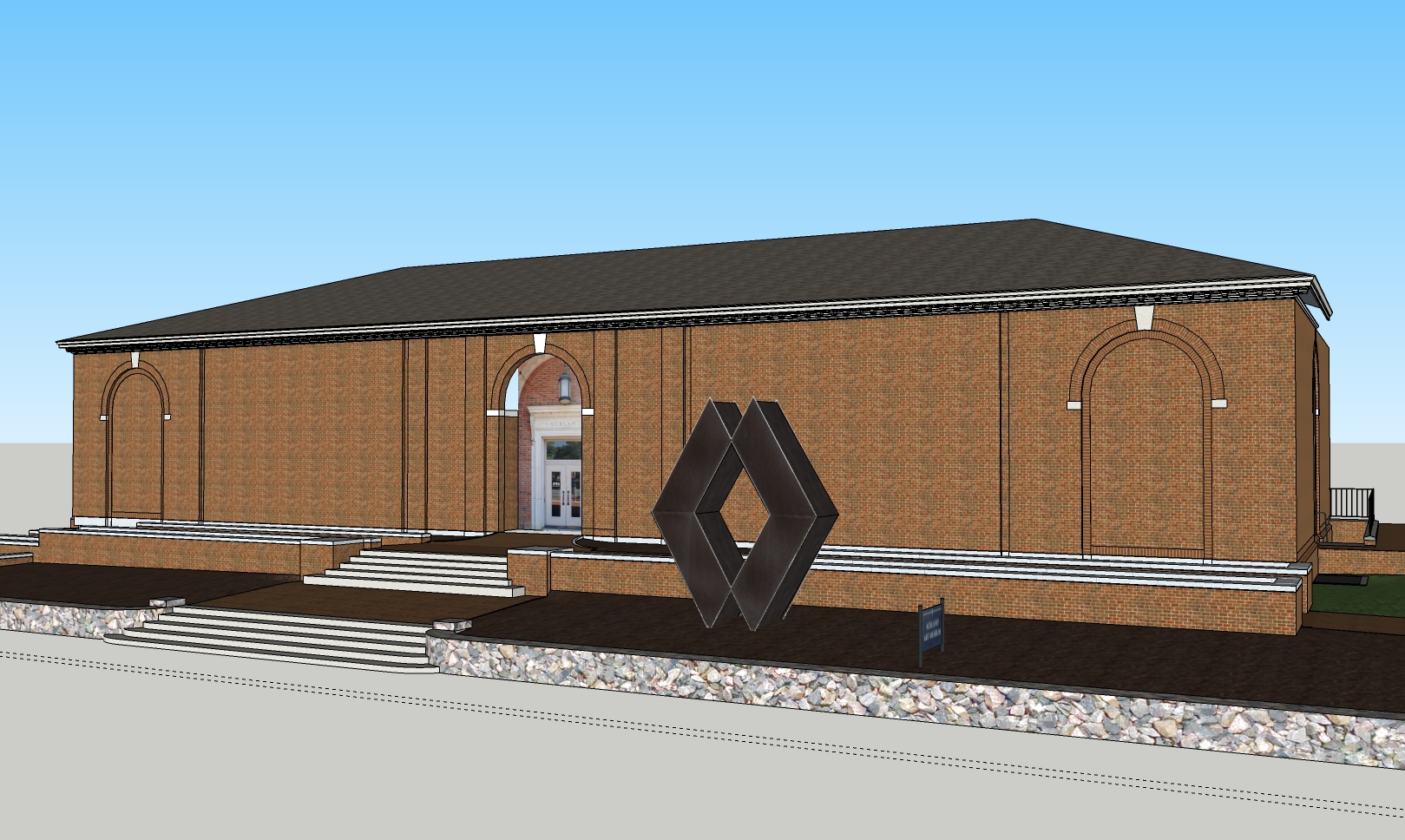
By Peter Nisbet, Deputy Director for Curatorial Affairs, Ackland Art Museum.
Many of you have been excited by how the Ackland has activated the space in front of the building in recent years by turning it into what we now call the “Terrace Gallery.” Our spinning tops (by Mexican designers Héctor Esrawe and Ignacio Cadena) and stickwork sculptures (by UNC alum Patrick Dougherty) have left a lasting impression, even if the space is currently dormant as it awaits infrastructure upgrades to make it even more suitable for presenting art.
But this is not the first time something like this has been attempted. Over forty years ago, the then curator John Minor Wisdom (now there’s a good name for a curator!) wrote in the museum’s 1977-78 Annual Report about the important decision “to purchase Antoni H. Milkowski’s Diamond. An exceptionally handsome minimalist sculpture,” Wisdom continued, “this work fills a significant gap in the Ackland’s holdings. Further its place outdoors in front of the Museum will advertise the Ackland’s nature to the public.” At the time, Milkowski (1935-2001) was a noted sculptor of monumental, geometric, and monochrome works, who taught for many years at Hunter College in New York.
The puzzle is that there is no further mention in the Annual Reports of this major and unprecedented undertaking! The sculpture does not appear in the official list of that year’s acquisitions, not that of the following year. Did the purchase fall victim to staff changes (both the key personnel left the Ackland at this very moment, with the director Joseph Sloane retiring and Wisdom accepting a position at the Houston Museum of Fine Arts)? Did the interim director, Innis Shoemaker, object? Or the University? Or were there problems with the artist? Without access to the full Museum archives (currently inaccessible with the shutdown) or indeed to the artist’s papers, it is hard to know.
But we can speculate about what might have been. Assuming that the sculpture was another cast of Milkowski’s 1968 Diamond at the Albright Knox Art Gallery, then, with the help of virtual imaging used by Nathan Marzen, our Head of Exhibition Design and Installation, we can imagine the view in this image. Diamond, at 16 feet tall and made of weathered steel, would certainly have made a dramatic, contrasting statement in front of the Ackland, affirming an openness to modern public art. But the sculpture may also have been in curious harmony with the Ackland’s elegant façade: both are symmetrical, stable, harmonious and frontal compositions that would surely have ended up in a respectful, but stimulating conversation with each other. Maybe the rhomboid forms would have ended up informing a stylized A as a logo for the Ackland!
The history of any institution is as much about what didn’t happen as what did. We can take reassurance from the fact that attempts to activate the area between the building and South Columbia Street have a long history, which we are proud to extend into the present and the future. Would Milkowski’s Diamond still be standing at the Ackland? The Albright Knox removed theirs into storage a few years ago, and maybe the same fate would have befallen the Ackland’s. Milkowski does not enjoy a big reputation at the moment. But maybe his work would have stood for a few decades as a powerful symbol of our ambitions to reach beyond our walls.
SketchUp illustration by Nathan Marzen.



To make such a strong and visible artistic statement on the museum’s facade would not have been wise to introduce during a major transition in the museum’s administration. It is probable that the incoming director, Evan H. Turner, decided not to proceed with the acquisition.
I knew Tony Milkowski from my years studying (1982–1984) and teaching (1987–2001) at Hunter College. Tony was a meticulous craftsman who reveled in the technical impossibility of the edge-to-edge contact suggested in most of his work and, yet, made it believable to us. Diamond, which I now realize I saw in 1968 at the Albright Knox Gallery when I was only 12 years old, was not cast but constructed from welded sheets of steel. As has already been stated, it would have had a wonderful presence in front of the museum.